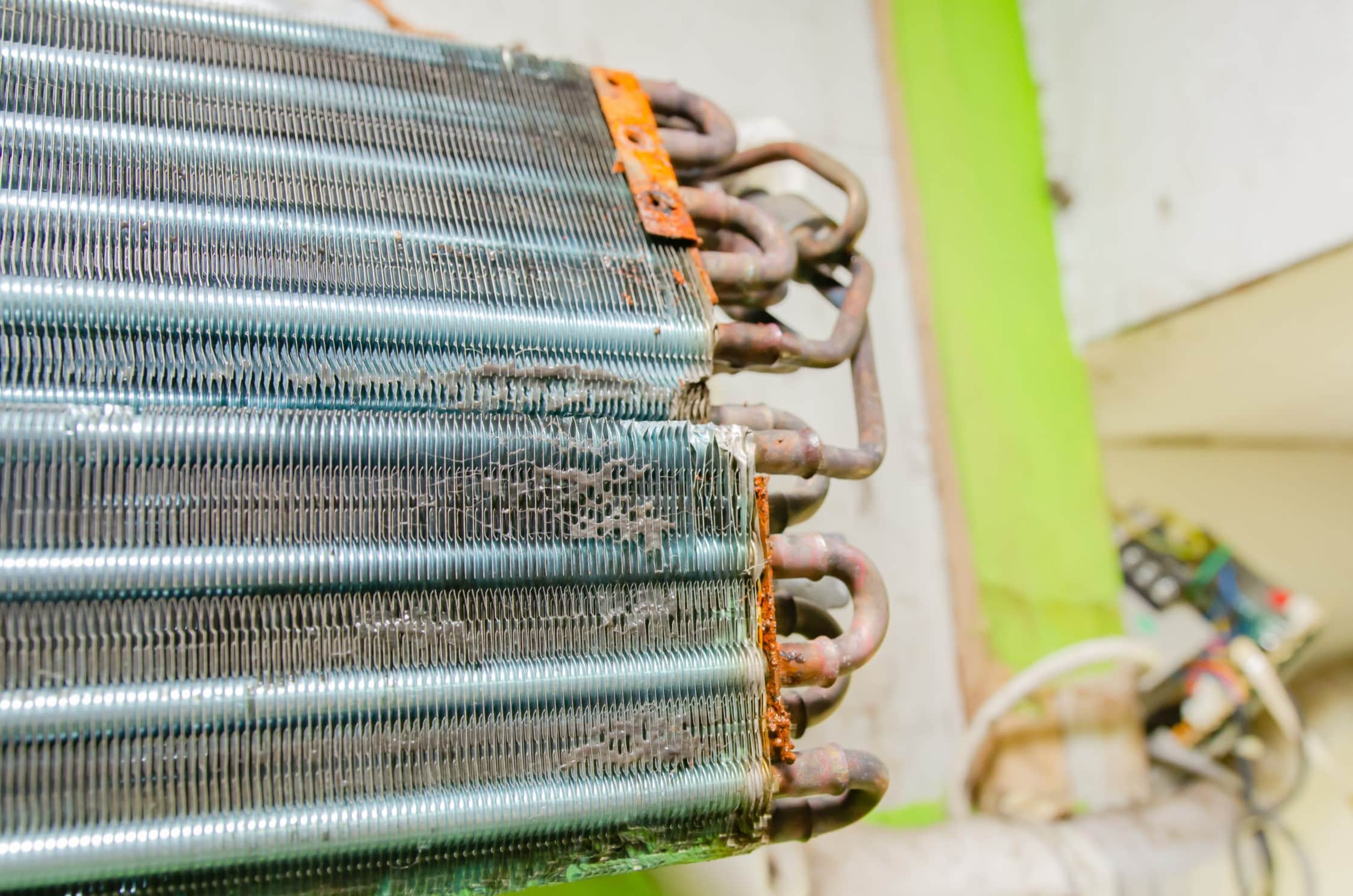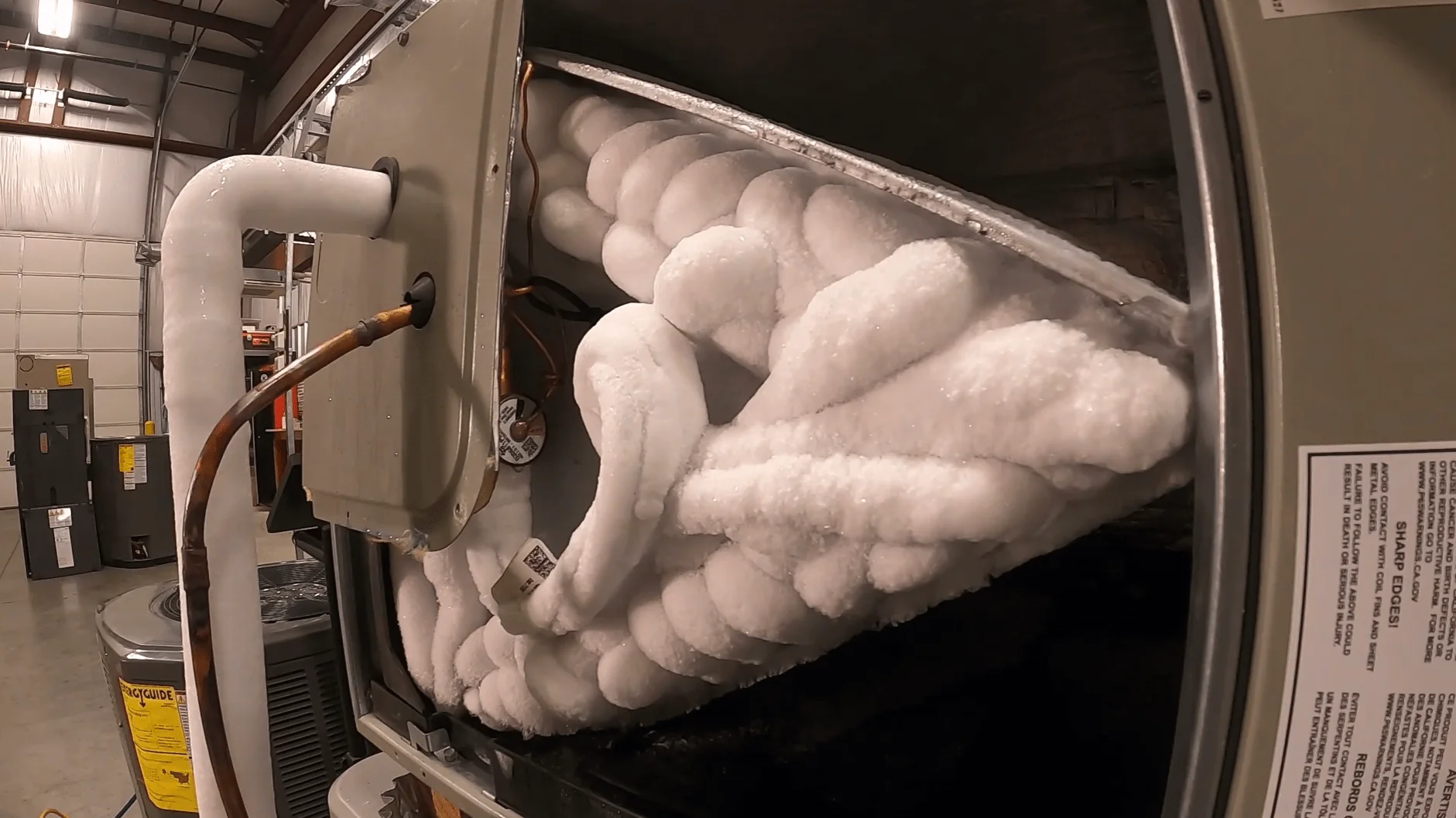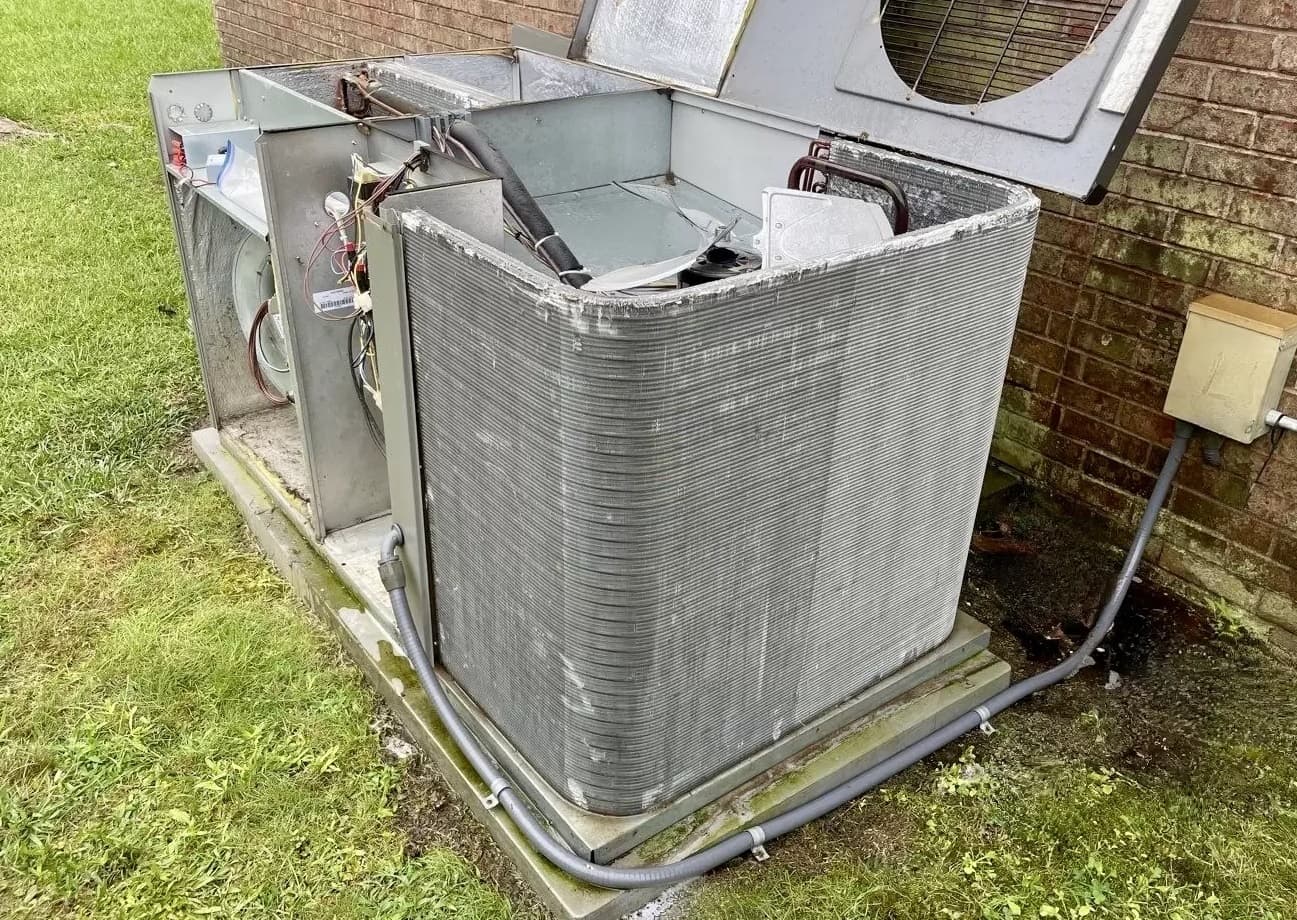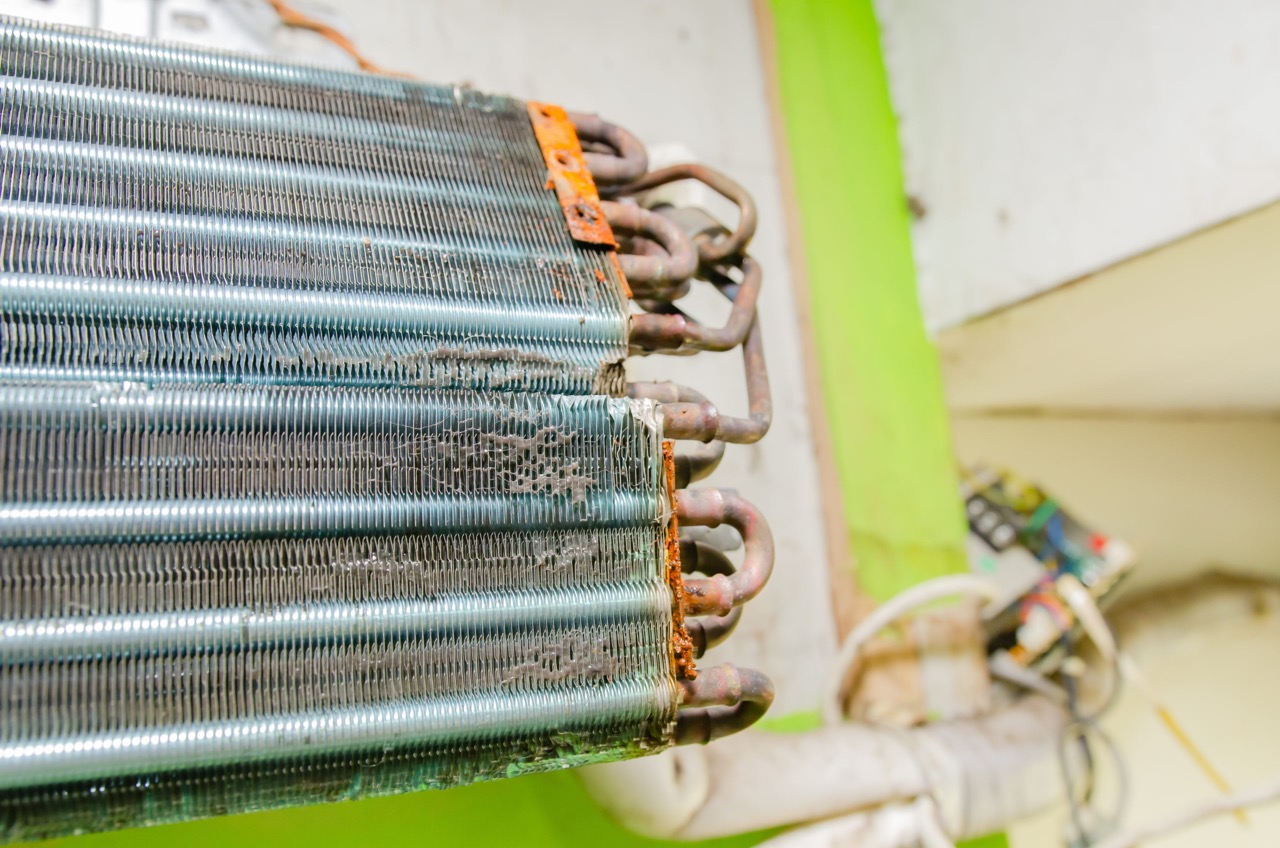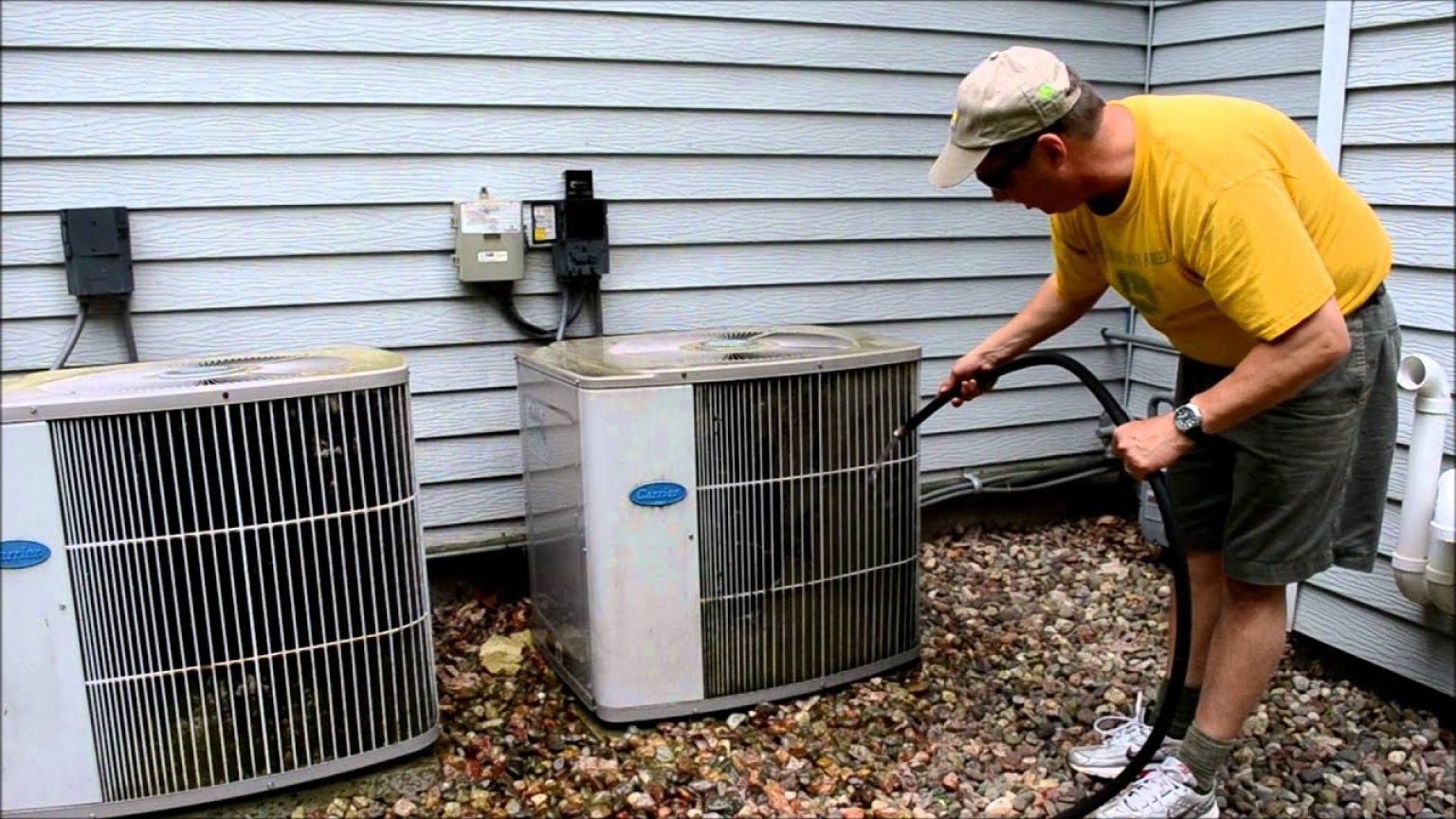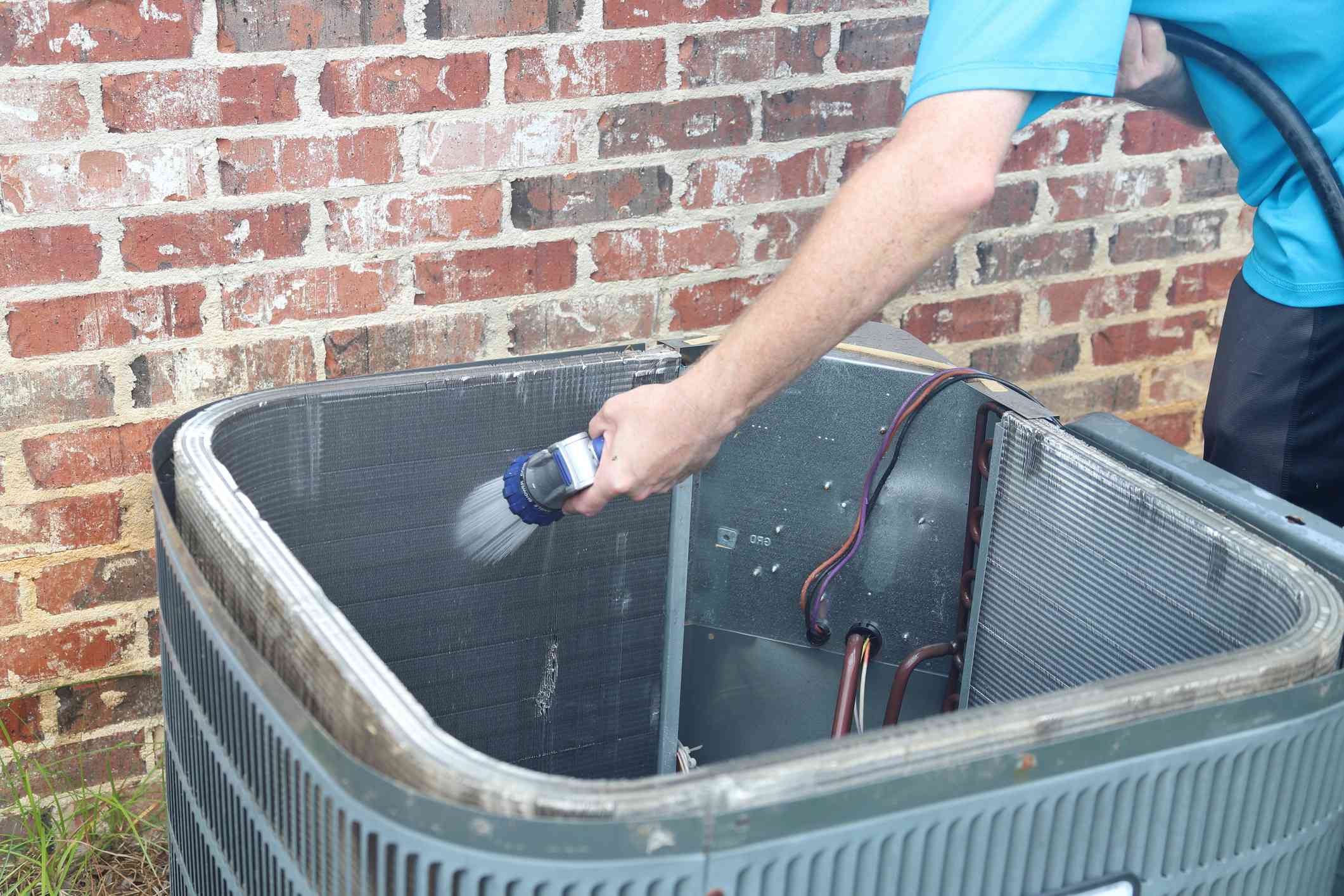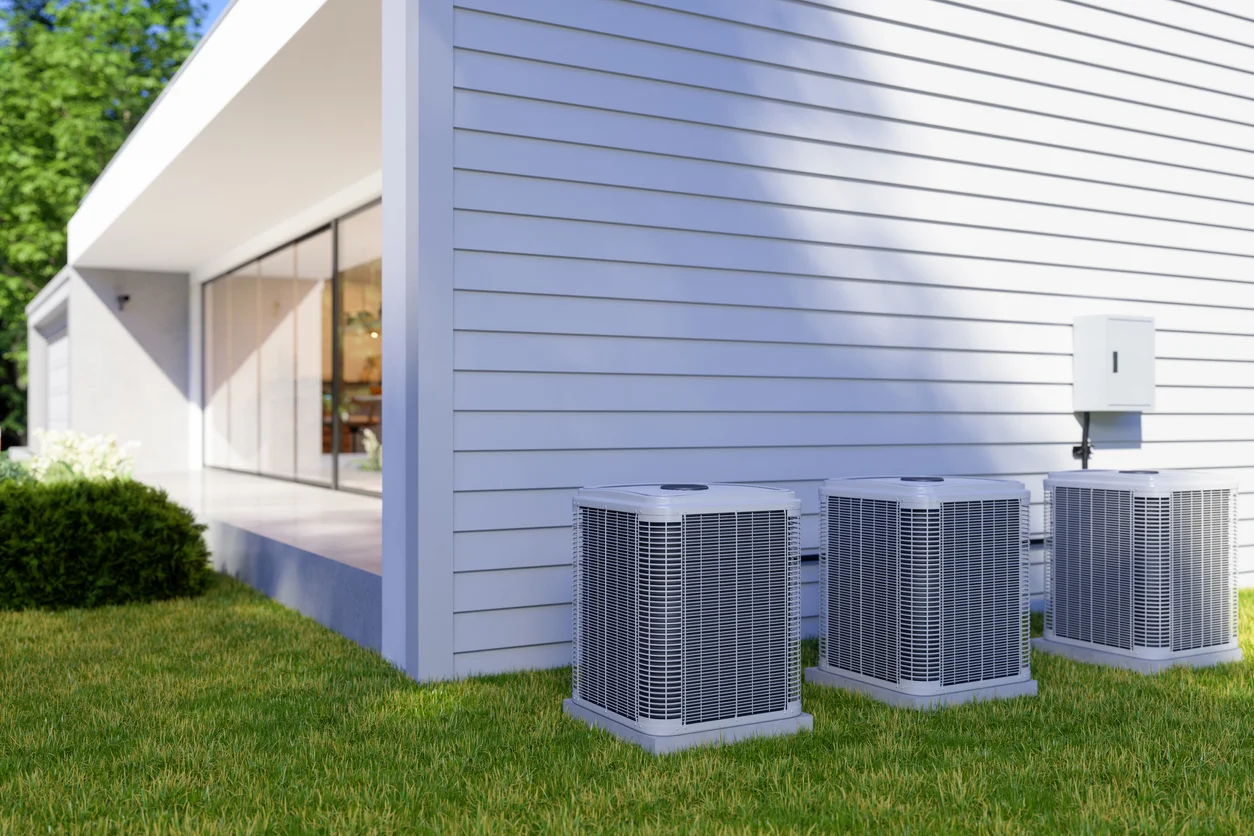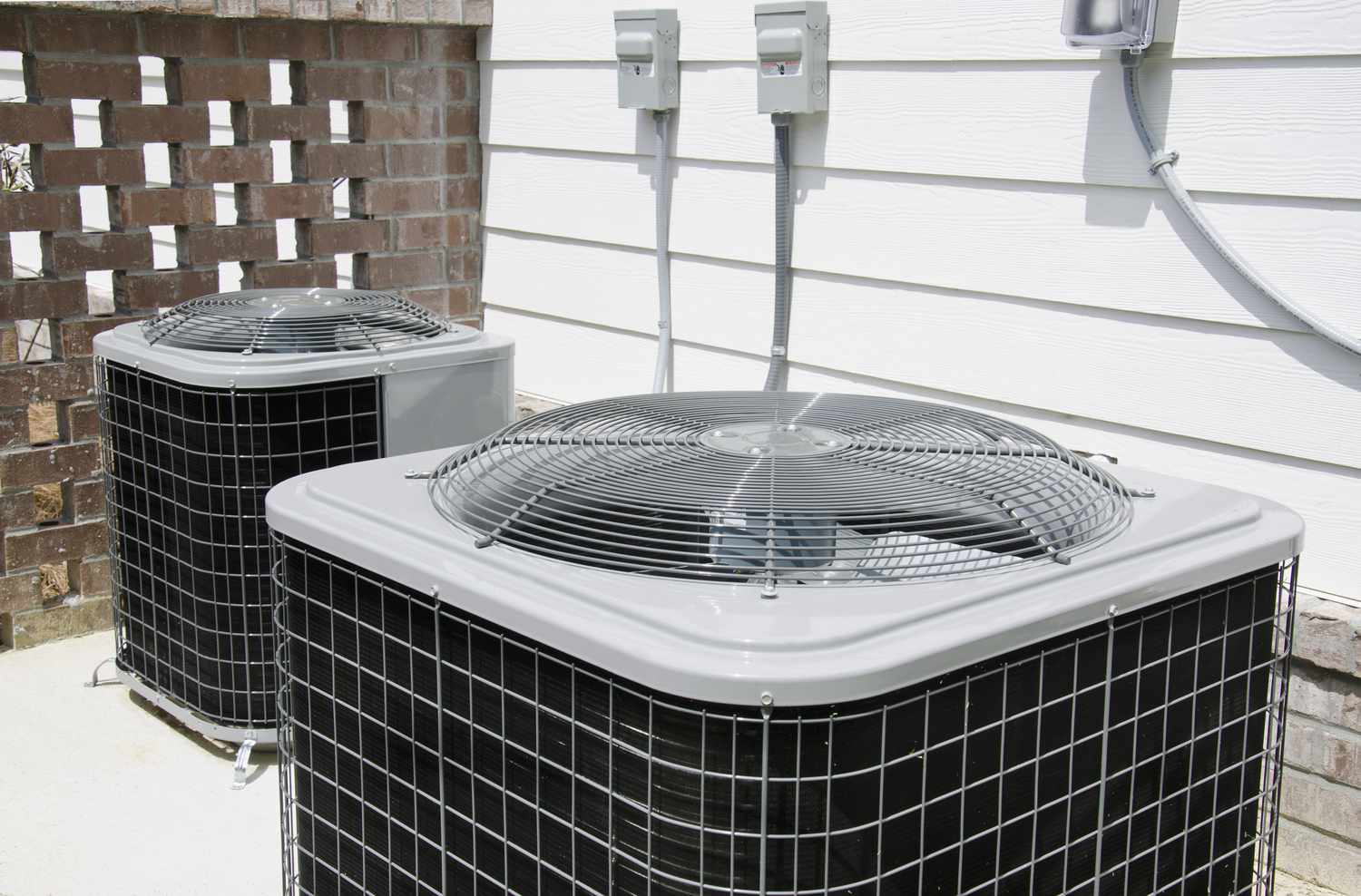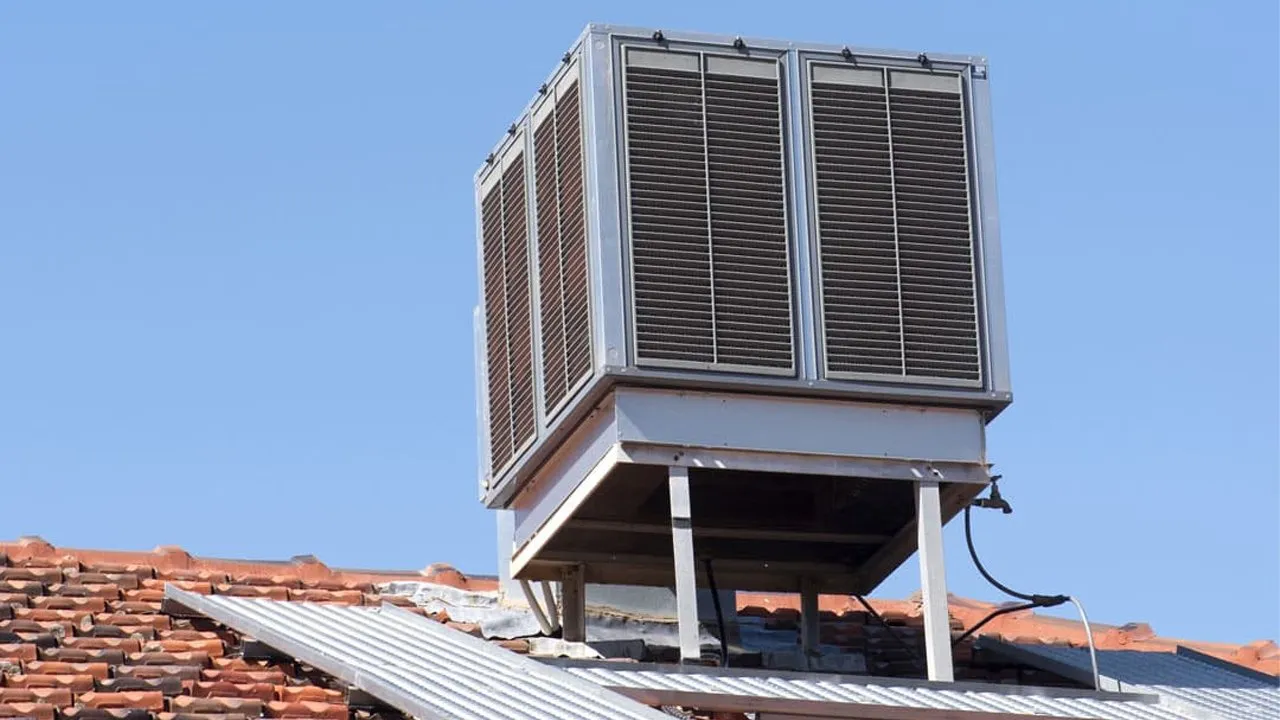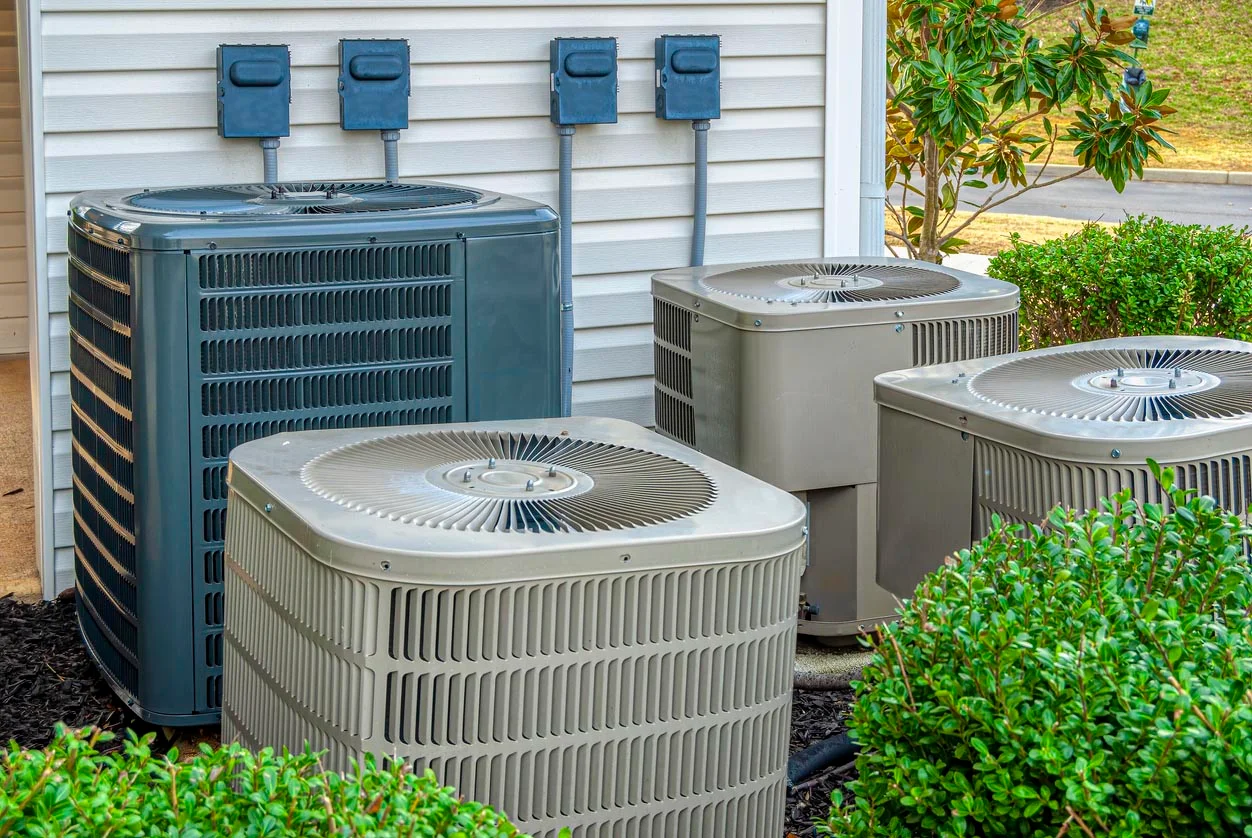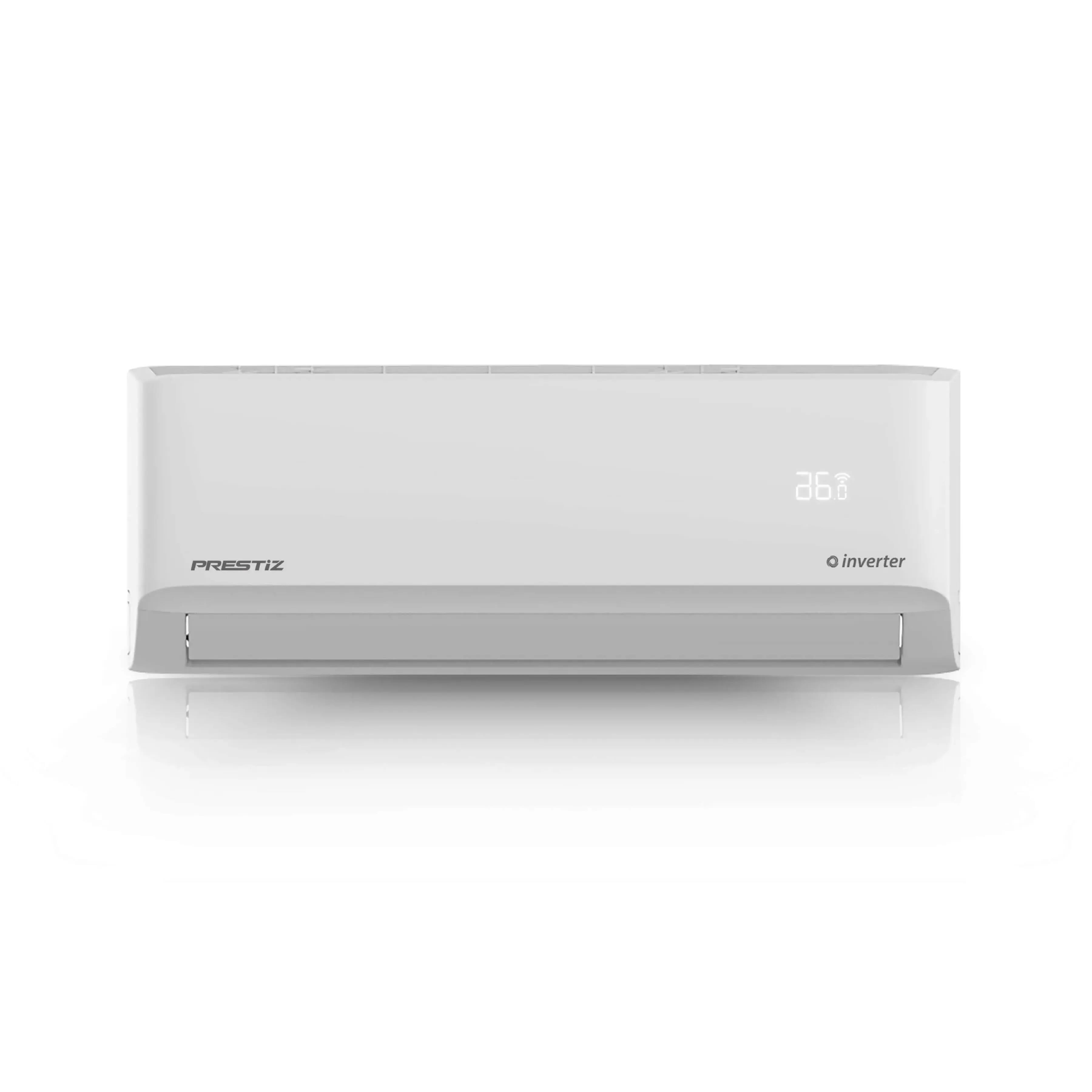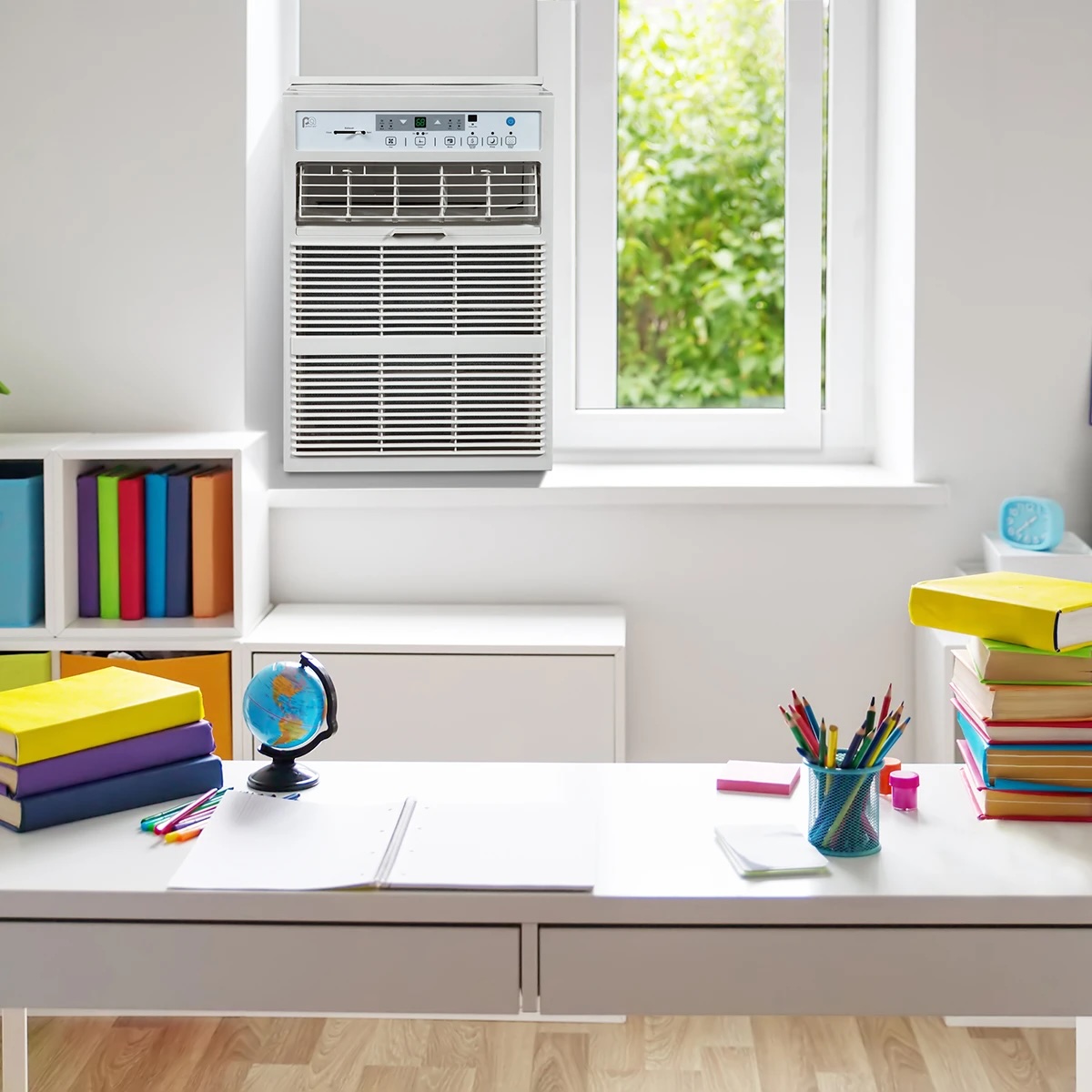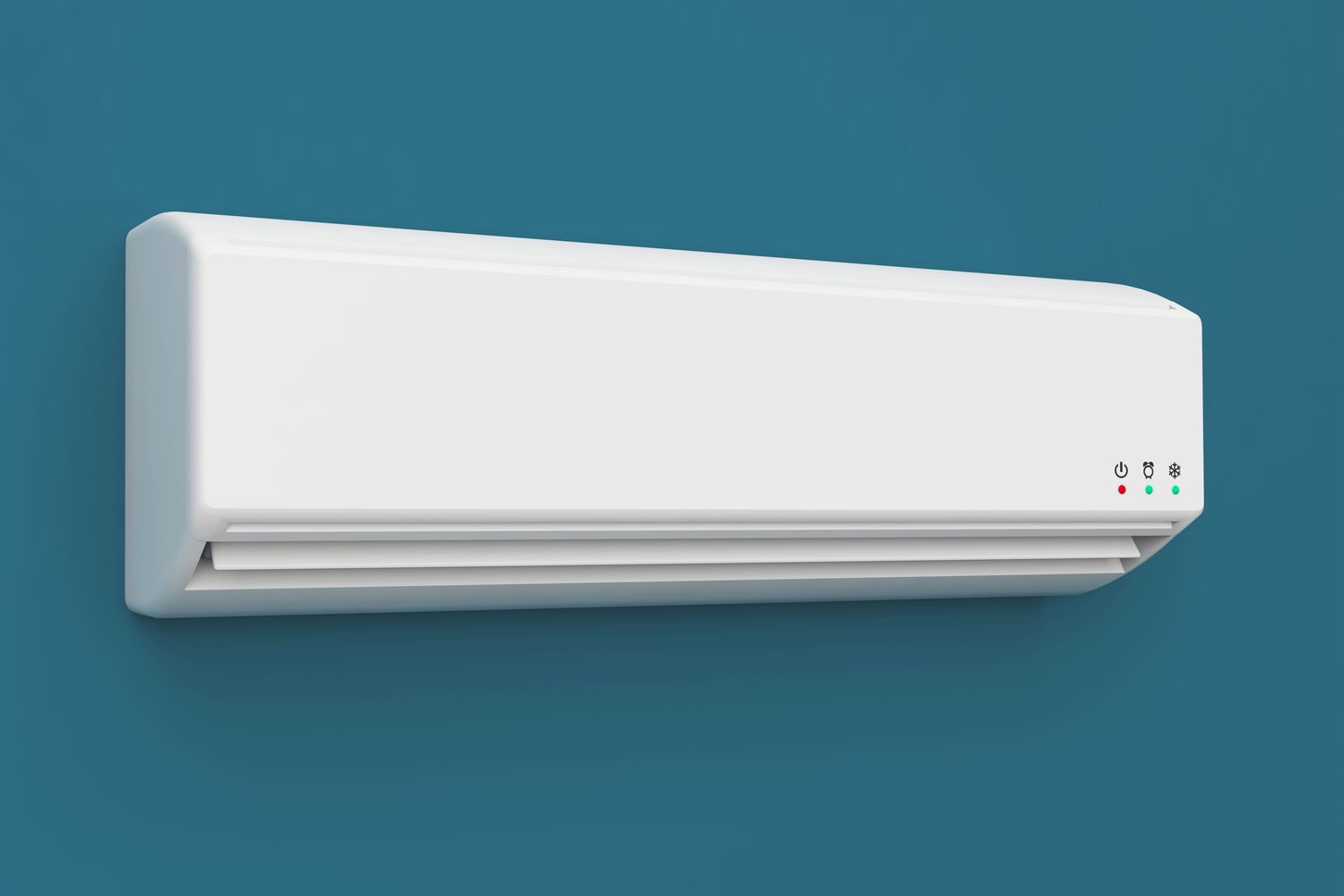Home>Home Maintenance>What Is An Air Conditioner Coil
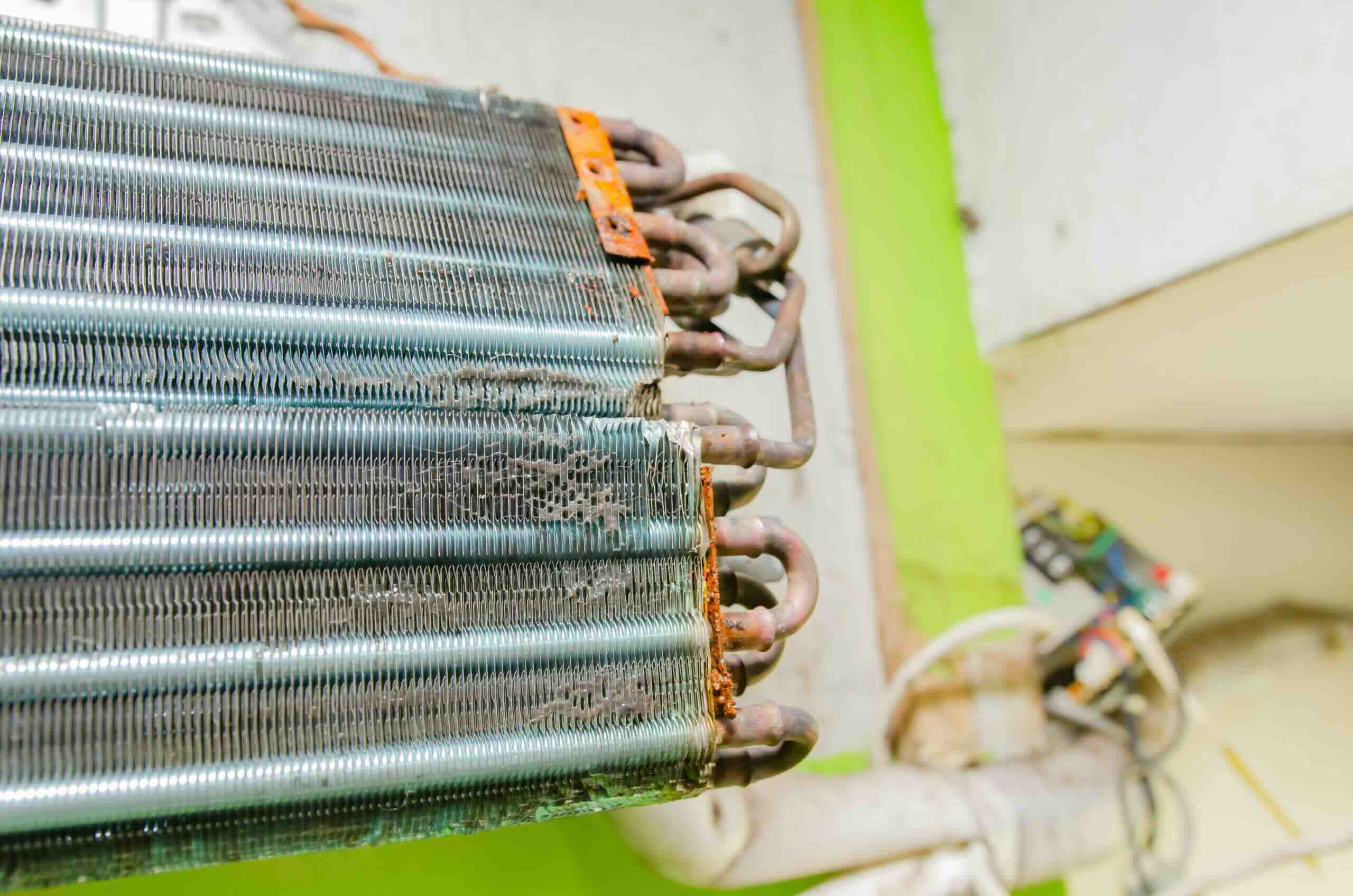

Home Maintenance
What Is An Air Conditioner Coil
Modified: March 7, 2024
Learn all about air conditioner coils and how they contribute to home maintenance. Find out why keeping your coils clean is essential for optimal AC performance.
(Many of the links in this article redirect to a specific reviewed product. Your purchase of these products through affiliate links helps to generate commission for Storables.com, at no extra cost. Learn more)
Introduction
Welcome to the world of home maintenance! As a homeowner, you probably understand the importance of keeping your house in top shape. One crucial aspect of home maintenance is taking care of your air conditioning system. The air conditioner coil plays a significant role in the cooling process and keeping your home comfortable. In this article, we’ll delve into what an air conditioner coil is, the different types of coils, and why it’s essential to clean and maintain them regularly.
An air conditioner coil is a vital component of your cooling system. It is responsible for transferring heat and cooling the air that circulates throughout your home. Without a functioning coil, your air conditioner would not be able to provide the cool, comfortable environment you rely on during hot summer months.
There are two main types of air conditioner coils: evaporator coils and condenser coils. Each coil performs a unique function in the air conditioning process. Understanding how these coils work and the importance of maintaining them will help you optimize your air conditioner’s performance and prolong its lifespan.
Evaporator coils, also known as indoor coils, are located inside the air handler or furnace unit of your cooling system. Their primary function is to absorb heat from the air inside your home and transfer it to the refrigerant circulating through the coil. As the warm air passes over the chilled coil, it cools down and is then distributed back into your home through the ductwork.
Condenser coils, on the other hand, are located in the outdoor unit of your air conditioner. Their role is to release the heat absorbed by the refrigerant to the outside air. As the warm refrigerant circulates through the condenser coil and comes into contact with the cooler outdoor air, it releases heat and transforms back into a liquid state.
Now that we’ve covered the basics of air conditioner coils, let’s take a closer look at how they actually work to keep your home cool and comfortable. Understanding the functioning of the coils will help you grasp the importance of regular cleaning and maintenance.
Key Takeaways:
- Regular cleaning and maintenance of air conditioner coils is crucial for efficient cooling, lower energy bills, and a comfortable home. Neglecting this can lead to reduced performance and potential system damage.
- Professional coil cleaning services offer expertise, thorough cleaning, and time savings. They ensure optimal performance, extend system lifespan, and provide peace of mind for homeowners.
Read more: Where Are The Coils On An Air Conditioner
Definition of an Air Conditioner Coil
An air conditioner coil, also known as an A/C coil, is a component of the air conditioning system that facilitates the transfer of heat in order to cool and dehumidify the air in your home. It consists of a network of coiled tubes made from copper or aluminum that are surrounded by thin metal fins. The coil is divided into two sections: the evaporator coil, located inside the air handler, and the condenser coil, situated in the outdoor unit.
When the air conditioning system is turned on, refrigerant, a chemical compound with excellent heat transfer properties, flows through the tubes of the coil. The evaporator coil cools and dehumidifies indoor air, while the condenser coil releases the heat absorbed from the indoor air to the outside environment.
Evaporator coils are responsible for absorbing heat from the air inside your home. As warm air is pulled into the air handler, it passes over the chilled evaporator coil. The refrigerant flowing through the coil absorbs the heat from the incoming air, causing the refrigerant to evaporate into a gas. This process cools down the air, removing heat and humidity from it before it is circulated back into your living space.
Condenser coils, on the other hand, are responsible for releasing heat to the outside air. The refrigerant, which is now in a gaseous state, flows from the evaporator coil to the condenser coil in the outdoor unit. The condenser coil is designed with numerous metal fins to increase the surface area and enhance heat transfer. As the outdoor fan blows air over the coil, the heat from the refrigerant is released into the atmosphere, causing the refrigerant to condense back into a liquid state.
Essentially, air conditioner coils form a continuous loop where the refrigerant absorbs heat from indoor air in the evaporator coil and releases it to the outdoor environment in the condenser coil. This heat transfer process is what allows the air conditioning system to create a cool and comfortable indoor environment.
Understanding the purpose and function of air conditioner coils is essential for homeowners looking to maintain the efficiency and longevity of their cooling system. Regular cleaning and maintenance of the coils can prevent issues such as reduced cooling capacity, high energy consumption, and potential damage to the entire air conditioning system.
Types of Air Conditioner Coils
When it comes to air conditioner coils, there are two primary types: evaporator coils and condenser coils. Understanding the differences between these types can help you better comprehend the role they play in the cooling process and the importance of maintaining them.
Evaporator Coils: Evaporator coils, also known as indoor coils, are located inside the air handler or furnace unit of your cooling system. They are responsible for absorbing heat from the air inside your home and cooling it down before distributing it back into your living space. Evaporator coils are typically made of copper due to its excellent heat transfer properties. The coils are looped and bonded to aluminum fins, which increases the surface area for better heat exchange. The evaporator coil is where the refrigerant evaporates from a liquid state to a gaseous state, absorbing heat in the process.
Condenser Coils: Condenser coils, also known as outdoor coils, are located in the outdoor unit of your air conditioner. Their primary function is to release the heat absorbed from the indoor air to the outside environment. Condenser coils are designed to withstand harsh outdoor conditions, and they are typically made of aluminum due to its corrosion resistance. The coils are also surrounded by thin aluminum fins to enhance heat transfer. As the hot, gaseous refrigerant from the evaporator coil enters the condenser coil, it releases heat to the outdoor air, causing the refrigerant to condense back into a liquid state.
Both evaporator coils and condenser coils are crucial for the efficient operation of your air conditioning system. They work in tandem to ensure heat is absorbed and released properly, allowing your home to remain cool and comfortable. However, over time, these coils can become dirty and clogged with debris, hindering their performance and negatively impacting the overall efficiency of your cooling system.
In the next sections, we will explore in more detail how air conditioner coils work and why regular cleaning and maintenance are essential in order to keep your system running smoothly.
Evaporator Coils
Evaporator coils are an integral part of the air conditioning system, responsible for cooling and dehumidifying the air inside your home. Located in the air handler or furnace unit, these coils play a crucial role in the heat transfer process that allows your cooling system to create a comfortable indoor environment.
The purpose of the evaporator coils is to absorb heat from the warm air circulating in your home. As the air conditioner is turned on, the indoor fan pulls the warm air into the air handler, where it passes over the chilled evaporator coils. The coils are made of copper tubes that are bonded to aluminum fins, creating a large surface area for efficient heat transfer.
The evaporator coils are filled with refrigerant, a chemical compound with excellent heat transfer properties. As the warm air passes over the cool coils, the refrigerant inside the tubes absorbs the heat from the air, causing the refrigerant to evaporate from a liquid state to a gaseous state. This heat transfer process cools down the air, lowering its temperature and removing excess humidity.
Once the heat is absorbed by the refrigerant and the air is cooled, the conditioned air is then distributed through the ductwork into different parts of your home, providing a comfortable and cool environment. Meanwhile, the warm refrigerant gas flows through the refrigerant lines to the outdoor condenser unit for further processing.
In order for the evaporator coils to function efficiently, it is crucial to keep them clean and free from dirt, dust, and debris. Over time, the coils can accumulate a layer of dirt, which acts as insulation and inhibits the heat transfer process. This can result in reduced cooling capacity, longer running times, increased energy consumption, and potential damage to the air conditioning system.
To maintain the cleanliness of the evaporator coils, regular maintenance is necessary. This can involve inspecting and cleaning the coils, changing the air filters regularly, and ensuring adequate airflow around the air handler or furnace unit. Additionally, scheduling professional maintenance services can help ensure that the coils are thoroughly cleaned and any potential issues are identified and resolved.
By keeping the evaporator coils clean and well-maintained, you can optimize the performance and efficiency of your air conditioning system, improve indoor air quality, and prolong the lifespan of your cooling equipment.
Condenser Coils
Condenser coils are an essential component of the air conditioning system, responsible for releasing the heat absorbed from the indoor air to the outside environment. Located in the outdoor condenser unit, these coils play a crucial role in maintaining the efficiency and performance of your cooling system.
When your air conditioning system is running, the hot, gaseous refrigerant from the evaporator coils flows through the refrigerant lines to the outdoor condenser unit. The condenser coils, typically made of aluminum, are designed with numerous metal fins to increase the surface area for better heat transfer.
As the outdoor fan blows air over the condenser coils, heat from the refrigerant is released into the atmosphere. This heat transfer process allows the refrigerant to condense back into a liquid state, ready to flow back into the evaporator coils to absorb more heat from the indoor air.
Condenser coils are exposed to various environmental elements, such as dirt, dust, leaves, and debris, which can accumulate on the coils over time. This buildup can reduce the efficiency of heat transfer, as it acts as insulation and prevents the coils from dissipating heat effectively. Consequently, the air conditioning system may experience reduced cooling capacity, increased energy consumption, and potential damage to the compressor.
Regular cleaning and maintenance of the condenser coils are crucial to ensure optimal performance and longevity of your air conditioning system. Here are some steps you can take to clean the condenser coils:
- Before starting any cleaning, make sure to turn off the power to the condenser unit from the electrical panel.
- Using a soft brush or a vacuum cleaner with a brush attachment, gently remove any loose dirt, leaves, or debris from the coils.
- If the coils are heavily soiled, you can use a mild detergent or coil cleaner specifically designed for air conditioner coils. Follow the manufacturer’s instructions and apply the cleaner to the coils, using a spray bottle or a foam applicator.
- Allow the cleaner to sit on the coils for the recommended amount of time, usually a few minutes, to dissolve any stubborn dirt or grime.
- Rinse the coils thoroughly with water, using a hose or pressure washer. Make sure to direct the water flow in the opposite direction of the air movement to avoid bending the delicate fins.
- Inspect the coils for any bent or damaged fins and use a fin comb or a soft brush to straighten them if necessary.
- Once the coils are clean and dry, restore power to the condenser unit and make sure it is functioning properly.
While cleaning the condenser coils is a doable task for some homeowners, it can be challenging for others. If you are unsure or uncomfortable performing the cleaning yourself, it is recommended to seek professional coil cleaning and maintenance services. These professionals have the experience and equipment to thoroughly clean the condenser coils, ensuring optimal heat transfer and system performance.
By keeping the condenser coils clean and well-maintained, you can ensure the efficiency and longevity of your air conditioning system, saving energy and enjoying a cool and comfortable home.
How Air Conditioner Coils Work
Air conditioner coils play a vital role in the cooling process of your air conditioning system. The evaporator and condenser coils work together to transfer heat and create a comfortable indoor environment. Understanding how these coils function can help you appreciate the complexity of your air conditioning system.
Evaporator Coils: The evaporator coils, located in the air handler or furnace unit, are responsible for absorbing heat from the indoor air. When you turn on the air conditioner, the fan in the air handler pulls warm air from your home and blows it over the cold evaporator coils. The evaporator coils, filled with refrigerant, rapidly absorb the heat from the passing air. This heat transfer causes the refrigerant to evaporate from a liquid state to a gaseous state. By absorbing heat from the air, the evaporator coils cool down the indoor air, lowering its temperature and removing excess humidity. The cooled air is then distributed back into your home through the ductwork, providing a comfortable environment.
Condenser Coils: The condenser coils, located in the outdoor unit, are responsible for releasing the heat absorbed from the indoor air to the outside environment. After the refrigerant evaporates in the evaporator coils and absorbs heat, it flows as a hot gas to the outdoor condenser unit. The condenser coils, surrounded by metal fins, increase the surface area and facilitate heat transfer. As the outdoor fan blows air over the condenser coils, the heat from the refrigerant is released into the atmosphere. This heat transfer causes the refrigerant to condense back into a liquid state, ready to repeat the cooling cycle.
The air conditioning system operates on the principle of heat exchange. Warm indoor air is cooled as it passes over the chilled evaporator coils, and the heat is absorbed by the refrigerant. The refrigerant then carries the heat to the condenser coils in the outdoor unit, where it is released into the outdoor air. This continuous cycle allows the air conditioning system to maintain a cool and comfortable indoor environment.
It’s important to note that the efficiency and effectiveness of air conditioner coils rely heavily on airflow and cleanliness. Any blockages or restrictions in airflow, such as dirty air filters or clogged ducts, can hinder the heat transfer process. Similarly, if the coils become dirty or accumulate debris over time, their ability to absorb or release heat is compromised. Regular cleaning and maintenance of the coils, as well as ensuring proper airflow, are essential to maintain optimal performance and energy efficiency of your air conditioning system.
Now that you have a better understanding of how air conditioner coils work, you can see why it is essential to keep them clean and well-maintained. Regular coil maintenance will ensure that your air conditioning system operates efficiently, providing you with a cool and comfortable home all year round.
Regular maintenance of your air conditioner coil is important to ensure efficient cooling. Clean the coil regularly to remove dirt and debris, and schedule professional maintenance to keep it in good condition.
Importance of Cleaning and Maintaining Air Conditioner Coils
Cleaning and maintaining your air conditioner coils may not be the most glamorous home maintenance task, but it is essential for the proper functioning and longevity of your cooling system. Neglecting regular coil maintenance can lead to a range of issues that can affect your system’s performance, energy efficiency, and even your indoor air quality. Let’s explore the importance of cleaning and maintaining air conditioner coils.
1. Energy Efficiency: Air conditioner coils that are covered in dirt, dust, or debris have reduced heat transfer efficiency. When the coils are not able to absorb or release heat effectively, your cooling system needs to work harder and run for longer periods to achieve the desired temperature. This extra strain on the system leads to increased energy consumption, resulting in higher utility bills. By keeping the coils clean, you can ensure optimal heat transfer efficiency and improve your system’s energy efficiency.
2. Cooling Performance: Dirty or clogged coils can significantly impact the cooling performance of your air conditioning system. When the evaporator coils are coated with a layer of dirt or debris, they are less effective at absorbing heat from the indoor air. As a result, your home may not reach the desired temperature, leaving you feeling uncomfortable during hot summer days. Maintaining clean coils ensures that your cooling system operates at its optimal capacity, providing consistent and efficient cooling performance.
3. Indoor Air Quality: The condition of your air conditioner coils can affect the quality of the air circulating in your home. When coils are dirty, they can trap allergens, dust, and other particles, which can then be blown back into your living space. This can lead to poor indoor air quality, triggering allergies, asthma symptoms, or respiratory issues. Regular cleaning of the coils helps to remove these contaminants and improves the overall indoor air quality of your home.
4. System Lifespan: Your air conditioning system is a significant investment, and you want it to last as long as possible. Neglecting to clean and maintain the coils can lead to long-term damage that can shorten the lifespan of your system. When dirt and debris accumulate on the coils, it can cause corrosion, refrigerant leaks, or even compressor failure. Regular coil maintenance helps to prevent these issues and extends the life of your air conditioning system.
5. Cost Savings: By investing a little time and effort in cleaning and maintaining your air conditioner coils, you can save money in the long run. A well-maintained system operates more efficiently, reducing energy consumption and lowering your monthly utility bills. Additionally, regular maintenance can help you detect potential problems early on, allowing for timely repairs and preventing costly breakdowns or system replacements.
To maintain clean and efficient air conditioner coils, it is recommended to follow a regular maintenance schedule. This includes inspecting the coils for dirt or debris buildup, changing air filters regularly, ensuring proper airflow around the indoor and outdoor units, and scheduling professional coil cleaning and maintenance services when necessary.
By prioritizing the cleaning and maintenance of your air conditioner coils, you can enjoy improved energy efficiency, cooling performance, indoor air quality, and system longevity, all while saving money on utility bills and avoiding expensive repairs. It is a small investment that yields significant benefits for your comfort and peace of mind.
Signs of a Dirty or Damaged Air Conditioner Coil
Regularly inspecting your air conditioner coils is crucial for maintaining the efficiency and performance of your cooling system. Over time, coils can accumulate dirt, dust, and debris, hindering their ability to transfer heat effectively. Additionally, coils can become damaged due to various factors. It’s important to be aware of the signs that indicate your air conditioner coils may be dirty or damaged. Let’s explore some common signs to watch out for:
1. Reduced Cooling Capacity: One of the first signs of dirty or damaged air conditioner coils is reduced cooling capacity. If you notice that your air conditioning system is struggling to cool your home as efficiently as before, it may be due to the buildup of dirt or debris on the coils. When coils are dirty, they cannot effectively absorb heat from the air, resulting in decreased cooling performance.
2. Longer Running Time: Another indication of dirty or damaged coils is longer running time. If your air conditioner seems to be running for extended periods, it could be a result of reduced heat transfer efficiency. When coils are clogged with dirt or debris, the system has to work harder and run longer to achieve the desired temperature, resulting in increased energy consumption.
3. Poor Airflow: Dirty coils can also lead to poor airflow throughout your home. As the coils become clogged, the air passing through them is restricted, reducing the amount of cool air that reaches your living space. You may notice weak airflow from your vents or hot spots in certain areas of your home, indicating an airflow obstruction caused by dirty or damaged coils.
4. Frozen Evaporator Coil: If your evaporator coil becomes frozen, it is likely a sign of a dirty or damaged coil. When there is a buildup of dirt or debris on the coils, it restricts airflow and can cause the coils to become overly cold. This can lead to condensation forming on the coils, which then freezes. A frozen evaporator coil not only affects the cooling performance but also puts additional strain on the compressor, potentially leading to system failure if left unaddressed.
5. Increased Energy Bills: If you notice a sudden spike in your energy bills without a corresponding increase in usage, it could be an indication of dirty or damaged coils. When coils are not functioning optimally, your air conditioner has to work harder to cool your home, resulting in higher energy consumption. Keeping your coils clean and well-maintained can help keep your energy bills in check.
6. Strange Odors: In some cases, dirty or damaged coils can emit unpleasant odors. Excessive dirt or debris on the coils can lead to the growth of mold or bacteria, which can result in musty or foul odors when the air conditioner is running. If you notice any unusual smells coming from your cooling system, it is worth inspecting the coils for dirt or damage.
If you observe any of these signs indicating dirty or damaged air conditioner coils, it is important to take action. Regular cleaning and maintenance of your coils can help improve performance, energy efficiency, and indoor air quality. You may want to consider scheduling professional coil cleaning and maintenance services to ensure a thorough and effective cleaning of the coils, as well as identifying and addressing any potential damage or issues with your air conditioning system.
By promptly addressing dirty or damaged air conditioner coils, you can optimize the performance and lifespan of your cooling system, ensuring a comfortable and efficient home environment.
How to Clean Air Conditioner Coils
Cleaning your air conditioner coils is an essential part of maintenance to ensure optimal performance and energy efficiency. While it is recommended to seek professional cleaning for a thorough job, there are steps you can take to clean the coils yourself. Here’s a step-by-step guide on how to clean air conditioner coils:
1. Turn off the Power: Before beginning any maintenance or cleaning tasks, ensure that the power supply to your air conditioning system is turned off at the electrical panel to prevent any accidents or injuries.
2. Access the Coils: Depending on your system, you may need to remove access panels or covers to access the coils. Consult your air conditioner’s user manual or contact a professional if you are unsure how to access the coils safely.
3. Inspect the Coils: Take a close look at the coils to assess the level of dirt or debris buildup. If you notice heavy dirt accumulation or any signs of damage, it may be best to contact a professional for cleaning or repairs.
4. Remove Debris: Gently brush or vacuum away any loose dirt, leaves, or debris on the coils. Use a soft brush or a vacuum cleaner with a brush attachment to avoid damaging the delicate fins of the coils.
5. Apply Coil Cleaner: If the coils are noticeably dirty, you can use a commercially available coil cleaner. Follow the manufacturer’s instructions and apply the cleaner to the coils using a spray bottle or a foam applicator. Be sure to wear protective gloves and goggles when handling and applying the cleaner.
6. Allow the Cleaner to Work: Let the coil cleaner sit on the coils for the recommended amount of time as specified by the manufacturer. This allows the cleaner to penetrate and loosen any stubborn dirt, grime, or organic matter.
7. Rinse the Coils: After the coil cleaner has had time to work, rinse the coils thoroughly with water. Use a hose or a pressure washer with a gentle spray to wash away the dirt and cleaner residue. Be careful not to use excessive water pressure that could damage the delicate fins.
8. Straighten Bent Fins: Inspect the fins of the coils for any bent or damaged sections. Use a fin comb or a soft brush to carefully straighten the fins if necessary. This helps to ensure proper airflow through the coils.
9. Allow the Coils to Dry: Once the coils are clean, allow them to dry completely before reassembling and turning on the power to your air conditioning system. Adequate drying time is important to prevent any moisture-related issues.
10. Schedule Regular Maintenance: Regular coil cleaning is recommended at least once a year, or more frequently if your system is subjected to heavy dust or debris. Consider scheduling professional maintenance services to ensure a thorough cleaning and inspection of your air conditioner coils along with other crucial components of your system.
Remember, if you are unsure or uncomfortable with cleaning the air conditioner coils yourself, it is best to seek professional assistance. HVAC professionals have the expertise and equipment to perform comprehensive cleaning and maintenance, ensuring optimal performance and longevity of your cooling system.
By keeping your air conditioner coils clean and well-maintained, you can ensure efficient heat transfer, improve energy efficiency, and enjoy a cool and comfortable indoor environment.
Professional Coil Cleaning and Maintenance Services
While cleaning your air conditioner coils yourself is possible, there are many benefits to considering professional coil cleaning and maintenance services. HVAC professionals have the knowledge, experience, and specialized equipment to thoroughly clean and maintain your coils, ensuring optimal performance and longevity of your cooling system. Here are some reasons why professional services are worth considering:
Expertise and Experience: HVAC professionals specialize in servicing air conditioning systems and have extensive knowledge of the intricacies of coil cleaning and maintenance. They are well-versed in the different types of coils, the specific cleaning procedures required, and the potential issues that can arise. Their expertise and experience allow them to identify any underlying problems, offer appropriate solutions, and provide comprehensive care for your cooling system.
Thorough Cleaning: Professional coil cleaning services typically involve a thorough and deep cleaning of the coils. HVAC technicians have access to high-quality coil cleaning solutions and equipment that can effectively dissolve and remove even stubborn dirt and debris. They are able to clean the coils from all angles, ensuring optimal heat transfer efficiency and preventing future build-up that can lead to reduced performance and system damage.
Comprehensive Maintenance: In addition to coil cleaning, professional services often include a comprehensive maintenance check of your air conditioning system. HVAC technicians can inspect other vital components, such as filters, fins, condensate drains, and electrical connections, to ensure they are in good working condition. This comprehensive approach helps identify potential issues early on, preventing major breakdowns and extending the lifespan of your cooling system.
Equipment and Tools: HVAC professionals have access to specialized tools and equipment specifically designed for cleaning and maintaining air conditioner coils. These tools allow for more effective and efficient cleaning, ensuring that every nook and cranny of the coils is reached. Additionally, they have the necessary safety equipment to work on your outdoor condenser unit and handle any potentially hazardous materials, such as coil cleaner solutions.
Time and Convenience: Cleaning air conditioner coils can be a time-consuming and labor-intensive task, especially if you are not familiar with the process. By hiring professional services, you can save time and effort, allowing you to focus on other important aspects of your life. HVAC professionals can efficiently clean and maintain your coils, ensuring the job is done properly and saving you the hassle of doing it yourself.
Preventative Maintenance Plans: Many HVAC companies offer preventative maintenance plans where they schedule regular visits to inspect and maintain your cooling system. By opting for these plans, you can ensure that your air conditioner coils and other components are regularly cleaned and maintained, minimizing the risk of major issues and maximizing the efficiency and lifespan of your system.
Warranty & Insurance: Hiring professional services to clean and maintain your air conditioner coils can also provide you with peace of mind. HVAC companies typically carry liability insurance and offer warranties on their work, protecting you from any potential damages or issues that may arise during the process.
Overall, professional coil cleaning and maintenance services offer a range of benefits, including expertise, thorough cleaning, comprehensive maintenance, specialized equipment, time savings, and peace of mind. These services can help optimize the performance and efficiency of your cooling system, improve indoor air quality, and extend the lifespan of your air conditioner coils and the overall system. Consider contacting a reputable HVAC company to schedule professional coil cleaning and maintenance to ensure your cooling system operates at its best.
Conclusion
Maintaining clean and well-functioning air conditioner coils is crucial for the efficiency, performance, and longevity of your cooling system. Evaporator coils and condenser coils work together to absorb and release heat, creating a comfortable indoor environment. Proper cleaning and maintenance of these coils are essential to ensure optimal heat transfer, energy efficiency, and indoor air quality.
Regularly inspecting your air conditioner coils and taking action if they are dirty or damaged can help prevent issues such as reduced cooling capacity, increased energy consumption, poor airflow, and potential system failure. Signs of dirty or damaged coils include decreased cooling performance, longer running times, poor airflow, frozen evaporator coils, increased energy bills, and strange odors.
While DIY cleaning of air conditioner coils is possible, seeking professional coil cleaning and maintenance services offers numerous benefits. HVAC professionals have the expertise, experience, and specialized equipment to thoroughly clean coils, ensure proper airflow, and perform comprehensive maintenance checks on your cooling system. They can identify and address potential issues and provide preventative measures to extend the lifespan of your system.
By keeping your air conditioner coils clean and well-maintained, you can enjoy improved energy efficiency, cooling performance, indoor air quality, and system longevity. Regular coil cleaning, along with professional maintenance services, will help optimize the performance of your cooling system, save energy, reduce utility bills, and provide a cool and comfortable indoor environment for you and your family.
Don’t overlook the importance of air conditioner coil maintenance. Schedule regular cleaning and maintenance, whether through DIY efforts or professional services, to ensure your cooling system continues to operate at its best. By prioritizing the care of your air conditioner coils, you can maximize your comfort, savings, and peace of mind for years to come.
Frequently Asked Questions about What Is An Air Conditioner Coil
Was this page helpful?
At Storables.com, we guarantee accurate and reliable information. Our content, validated by Expert Board Contributors, is crafted following stringent Editorial Policies. We're committed to providing you with well-researched, expert-backed insights for all your informational needs.
